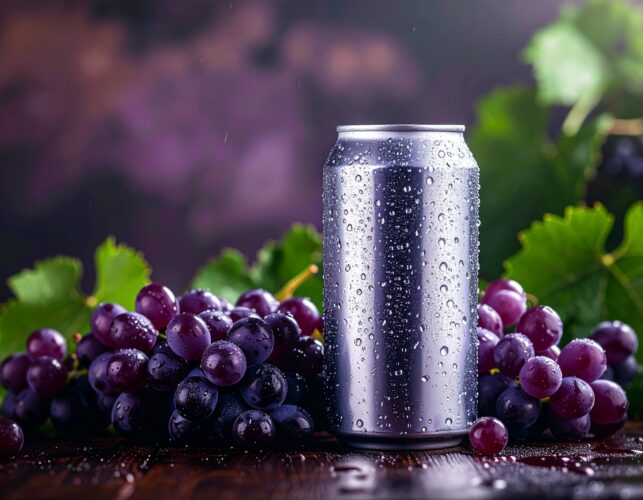People used to believe that producing kosher l’mehadrin (super kosher) quality wine was simply impossible, mainly because kosher versions of many of the ingredients (mentioned later in this article) used in the wine industry were unavailable. But the situation has changed – thanks to the OK’s determination to solve kashrus problems without compromising halacha, but with an eye for preserving the quality of the wine.
Becoming kosher is never easy for winery owners. They usually go through a very real crisis before they are finally able to surrender the winery, including the keys, to the OK rabbis. People who deal with wine tend to have a deeply emotional attachment to their profession – as one of our mashgichim once stated, “There is something artistic about those people [hardly surprising if we remember Robert Lewis Stevenson’s famous quote, ‘Wine is bottled poetry.’] and, like any artist, they are deeply invested in what they are doing for a living.”
Wine is different from other foods and beverages. Wine is not kosher if it is made or touched by gentiles (ovdei kochavim). The reason for this prohibition is twofold – to prevent partying together, which leads to assimilation, and because wine was often used in the rituals of avodah zara (idol worship). In order for wine to be kosher, it must be made only by frum, shomer Shabbos workers. This means that secular wine makers cannot pay for kosher certification, let a mashgiach hang around checking ingredients, and continue working as usual. They are actually required to relinquish control over their business and watch from the sidelines while the wine is made and matured outside of their reach. They cannot even get into the wine caves unless accompanied by the mashgiach. For an artisan, that’s not an easy requirement to accept.
So, why do so many wineries eagerly seek certification?
immeasurably in the last few years…
As the old adage says, “Business comes before pleasure.” Becoming kosher might mar the artistic pleasure for some winery owners, but business considerations call for this concession.
Observant Jews consume a lot of wine. For Kiddush and Havdalah, on holidays, at simchas… wine is served at all these occasions and there is an increasing demand for this wine to be of a superior quality. Once, the Orthodox residents of Israel were satisfied with heavy sweet wines. But the awareness of wine quality has risen immeasurably in the last few years, mainly thanks to frum, Anglo Jews who made aliyah. These Jews brought the wine-drinking culture to Israel – with all of its nuances, subtleties and preferences. In the Orthodox neighborhoods, a new liquor store opens every few months. This large and still growing market is simply impossible to ignore.
Yet another advantage of being kosher certified is the chance to successfully export wines. Israeli wines are especially sought after by frum Jews all over the world, who will, of course, only purchase kosher wines.
Another factor that contributes to the vintners’ satisfaction with their kosher certification is the staff of frum workers the OK employs on their behalf – workers who are conscientious, ethical and hard working. We have never had an experience where the vintner was dissatisfied with any worker we sent to a certified winery, and the vintners know that their wine is in good hands.
Still, it is not easy. Becoming kosher certified involves many apparent risks for the wineries. One winery owner in particular went through an arduous inner struggle before finally agreeing, albeit reluctantly, that he had to venture into the kosher realm. This man was the true artistic type – he actually used to sleep among the wine tanks, believing that this was the way to best sense the advancement of the fermentation process. He had to give up his favorite sleeping arrangement, but today he is far from sorry for his sacrifice. There is only one thing he regrets: “I wish I had become kosher 10 years earlier.”
Sometimes, the financial benefits of kosher certification seem less alluring because of the immediate losses incurred. Many wineries in Israel have the custom to open their special shop on Shabbos, when people all over the country come to taste their best products. The OK once had to deal with such a winery, whose owner complained bitterly about the huge losses that he was going to absorb. I promised him that becoming kosher would not cut his profits in any way. In its very first “kosher” year, this winery was purchased by a very powerful beverage giant, and raised its annual production rate from 100,000 bottles to about one million bottles of wine. Needless to say, the winery owner suffered no losses from his decision to become kosher.
There is one thing, though, which vintners cannot give up. OK Kosher Certification certifies hundreds of different wines from twenty prestigious wineries in Israel. These wineries, happy though they are to acquire kosher certification, do not want to compromise the quality of their wine. So, certifying these wineries means not only making sure all of the halachic requirements are met; it also means a lot of research and development work for the OK to ensure the quality of the wine does not suffer. This work takes time and is never easy, but the OK has succeeded in proving that, if there’s a will, there’s a way to produce high-quality kosher wines. Rising to this challenge makes the OK the leader in kosher wine certification across the globe – not only in Israel and the United States, but in France, Turkey, Argentina, Chile and Australia, as well. In almost every corner of the world, you will find local and imported wines bearing the OK symbol.
Kosher L’Mehadrin Tartaric Acid
Sometimes a wine’s acidity is not high enough. This is a result of harvesting too late in the season or too much heat during the ripening stage. Whatever the reason, the result is flat and unbalanced wine. To remedy this problem, it is customary to increase the wine’s acidity by adding acids to the must. This process is especially common in warm areas like the Mediterranean, where Israel is located. The acidity should not be too high, either; wines which are too acidic (due to unripe grapes or exaggerated addition of acids to the wine) will be too sour, sharp, and unpleasant to drink.
Stabilizing the wine is achieved by the addition of tartaric acid, which is preferable to all other acids because it is extracted from the wine itself. This acid is extracted from the crust created in the barrels or from the grape refuse which is left in the tanks after all the liquids have been extracted.
In the past, it was impossible to use tartaric acid in kosher wine production, since most tartaric acid is extracted from stam yanam (non-Jewish wine). Alternatively, there are kosher agencies which rely on heterim permitting the use of tartaric acid produced from wine stone (the reddish, crusty residue in wine barrels) after it has aged for one year, but in OK kosher l’mehadrin wine production, we avoid relying on heterim.
The OK decided to embark on a two-year project to produce kosher tartaric acid with the help of the kosher wineries we certify. Every mashgiach collected the ingredients necessary for producing the tartaric acid, until we had such ingredients from millions of kilos of grapes from wineries all over the country.
The acid underwent initial processing in Israel and was then sent by our mashgichim for final processing abroad. The kosher l’mehadrin tartaric acid produced by the OK was sent to many wineries which suffered due to their inability to produce truly excellent wines. Now these wineries have the resource they were missing for so long – a kosher l’mehadrin tartaric acid to upgrade the quality of their wines.
Kosher Malolactic Cultures
After the initial alcoholic fermentation, some wineries perform a second fermentation called malolactic fermentation. This process helps stabilize the wine and add character and flavor to it. Many prestigious wines undergo this second fermentation process. There is a serious kosher problem with this process, though, since the malolactic culture comes from lactic acid extracted from milk. For decades, the OK searched for a kosher alternative and, finally, we found a culture company that undertook the task of developing a malolactic culture from kosher, non-dairy ingredients. The development of this culture took a few years of hard work, but the result was a positive solution for another long-standing obstacle to the production of superior kosher wine.
A Barrel of Problems
Sometimes, wines are matured in special oak barrels from California, France, and Italy. Most wineries buy barrels which have already been used to age other wines, but there is a problem with these barrels – they were used for the maturing of non-kosher wines. Used barrels cannot be used for kosher wine (unlike liquor that is matured in sherry casks, which is not problematic).
In the production of new barrels there is an interesting phenomenon. They are made from staves which are held together by metal hoops, but sometimes they are bound by the ancient method of using dough as glue. This dough produces an excellent seal, but of course, it is chometz. Barrel making is an ancient skill which has traditionally been passed from father to son. The trade secrets, including how to glue the logs together, usually stay within the family.
Most kosher agencies used to be satisfied with the barrel makers’ declarations that they do not use barrels sealed with chometz. The OK decided to send a rabbi to check whether it was possible to rely on the barrel makers. It so happened that the very day the rabbi visited the cooperage (where wine barrels are crafted) he noticed a kosher delivery ready to be sent to Israel, but this delivery included some barrels that were definitely not kosher. The cooperage owner explained that there were 17 empty places left in the container, so he filled them with non-kosher barrels. The temptation to cheat “just a bit” is indeed hard to resist – every barrel costs over $1,000.
Following this incident, the OK started sending mashgichim to supervise the barrel making and transport. Today, many kosher agencies use our services in this field.
Super Kosher Cork Stoppers
The stoppers for wines are made from oak cork, which grows mainly in Portugal. The advantage of cork is that it is a porous material that lets the wine breath, so many wineries use cork as a means of wine closure, especially for their prestigious wines. Sixty percent of wine bottles are closed with cork stoppers, but the problem is that cork is not easy to obtain, since it is made from 150 year-old oak trees and the bark can only be peeled once every ten years. This shortage has caused cork prices to skyrocket. One solution is to produce cork stoppers from leftover cork chips. To glue this refuse together, factories use glue made from fats and glycerin which are mostly non-kosher. Since wine corks must be made from kosher material because the cork touches the wine in the bottle, the OK had to get into another field of wine production and arrange kosher production of cork stoppers, where the glue was made from kosher ingredients and a mashgiach supervised the manufacturing of the stoppers.
Kosher Fungus
Botrytis cinerea is a very interesting fungus. On one hand, it can cause terrible damage to grapevines. On the other hand, using it in a controlled fashion actually helps the wine in a process called “noble rot.” This fungus removes water from the grapes, leaving behind higher percentages of sugars, fruit acids and minerals, making the end product more concentrated and intense.
This fungus is usually grown on wheat substrate and, moreover, it is fed with the blood of pigs. (The question of bio-engineering, especially when non-kosher products are involved, is a highly complex halachic question, which will be, G-d willing, addressed in a future article.)
The OK met with a leading biologist from Tel Aviv to develop kosher botrytis and the process was neither short, nor easy, but in the end we had an approved botrytis for our wineries to use.
Today we know that high quality kosher wine is not a dream, but rather a very successful reality. Robert Parker, a famous wine taster, visited Israel last summer and gave the kosher l’mehadrin wines of an OK certified winery a grade of 93 out of 100 – a very high grade according to every criterion. This is our wine vision come true – exquisite taste and quality, paired with an extraordinary level of kashrus.
Israel, Executive Rabbinic Coordinator


 EN
EN  ZH
ZH  KR
KR  BR
BR  ES
ES  IN
IN  IL
IL 




